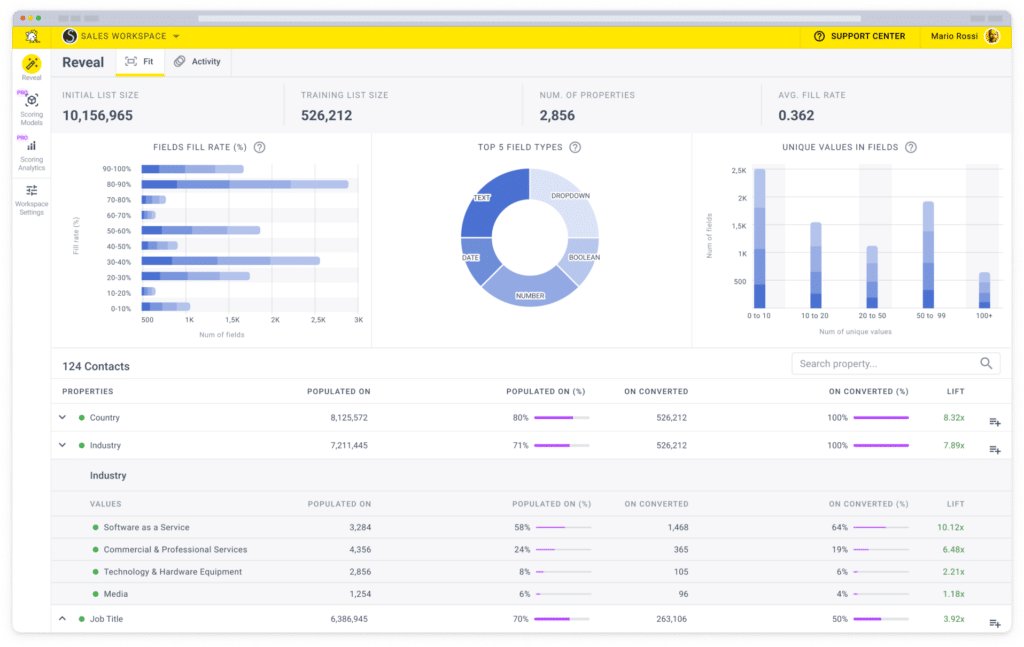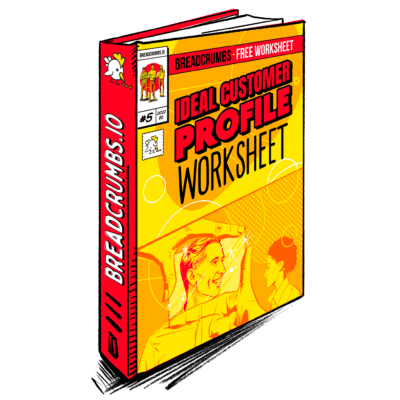Your customer experience is one of the most important competitive factors for your business. Making sure your customers get the best experience is the key to both conversion and customer retention.
According to a study by KPMG, 90% of consumers across the globe believe that issue resolution is the most important aspect of customer service, while 70% of consumers want companies to take steps so that consumers don’t need to repeat themselves to each new staff member they encounter.
The secret to optimizing your customer experience is visualizing your customer journey. Breaking down this journey will help you identify pain points and streamline your service.
What is The Customer Journey?
Every interaction with your business makes up part of the customer journey. The need or desire for a product is where the journey begins. Whether customers are persuaded by popups generated by WordPress plugins on your website or they find you through research, this will be a customer’s first impression of your business.
From here, there could be multiple interactions before a purchase occurs. Of course, there’s always the possibility that the customer will choose another business at this stage. Even once a transaction happens, the customer journey isn’t over.
The ongoing support you provide to customers is a valuable part of the customer experience. For example, if there are any hold ups in your manufacturer supply chain that affect when a customer’s order will be delivered, make sure that you communicate this to them as soon as possible.
Ongoing support also applies to any post-sales promotional material you send, such as push notifications, email newsletters, and so on.
At every stage of this journey, your business can influence the customer in both positive and negative ways. That’s why it’s so important to understand your customer and their mindset at each step.
What is Customer Journey Mapping?
To help with this, many businesses map their customer journey. This serves as a way to visualize and understand what interactions make up each part of the journey and how you can affect them. It also creates a shared resource that can guide ongoing strategic decisions.
The generic map of a customer journey looks similar for every business. To make a truly useful map, you need to break down each of the stages into interactions and actions, which means every touchpoint a customer has with your company.
You also need a clear understanding of every action a customer needs to take to proceed to the next stage. For example, think about your checkout process. How many clicks does a customer need to make to go from product page to purchase?
Clearly, you can’t literally map out each interaction for every single user. That would be far too time-consuming. So, most businesses rely on creating a hypothetical journey for their key buyer personas.
Once you have the map, you can use this along with your customer data. This will let you narrow down details like where most customers bounce or common factors between repeat customers. Then you can optimize your processes based on those insights.

Why You Need to Map Your Customer Journey
The purpose of the customer journey map is to enable your teams to provide the best customer experience. There are other practical ways that customer journey mapping can help your business, too.
Design & Content Creation
When a designer has access to a journey map, it gives context to the design. If a UI designer, for example, has insight into a user’s desired outcomes, then their design will be much more intuitive.
Good content creation requires you to get in the mind of the customer. When you create copy, consider the stage of the journey the customer is at. This will help you answer relevant questions and build positive customer relationships with your content.
Data-Driven Improvement
Using the customer feedback and user data you collect is a vital part of journey mapping. There’s no better way of understanding how your customers feel about a process than asking them.
Direct feedback isn’t always easy to collect, though. Using behavioral data collected from your site, app, sales, and service areas will let you fill in the gaps. Using real-time customer data like abandonment and conversion rates lets you make informed decisions on improvements.
Effective Management
Having a customer journey map can be a useful communication tool for managers, whether working with remote teams or managing a call center.
It gives employees at every level, even those managing customer interactions through virtual phone numbers, an idea of their role in the customer journey. Sales targets and KPIs can seem like abstract concepts to front-line sales and service staff.
Having a map to refer to can give context to a role. It lays out the objective clearly, getting the user to the next step in their journey while providing the best experience possible. This gives managers an actionable roadmap to help their teams meet targets, which can be communicated to staff using the best business phone system on the market.
Digital Transformation
If your business is going through digital transformation, having a map set out keeps everyone on the same page. There will likely be a lot of change happening all at once in your business.
Keep the customer journey at the forefront of everyone’s mind.
It’s no good delivering more efficient services if you’ve already turned away most of your audience with negative experiences. Building a digital transformation strategy with a customer journey map will help you assess the impact of your changes on the customer.
Let’s say you’re implementing a new customer service automation solution. You need the automation to assist the customer, but an unintuitive virtual assistant can be more of a hindrance.
Understanding your customers will help you use automation where it’s needed. It will also help you tweak automated programs or AI assistants to be more in tune with your customer’s expectations.
-
What Is B2B Retargeting and How Can It Generate More Leads?
Read more: What Is B2B Retargeting and How Can It Generate More Leads?Have you ever casually browsed a product online, only to suddenly see ads and promotions…
5 Tips For Creating a Customer Journey Map
Now that you know why you need a customer journey map, here are the top five tips for creating a map of your customer journey.
1. Use Data & Customer Feedback
You’re likely already using business analytics like website or app tracking data. These kinds of hard data points are necessary when building your map. You’ll need data like click-through rates, bounce rates, dwell time, and conversions, but they don’t mean much on their own.
Understanding how this data reflects a customer’s thoughts and feelings requires collecting direct feedback. Customer satisfaction surveys will help, but CSAT scoring isn’t the only important part. It’s also the bespoke feedback on customer experiences that you’re looking for.
To help with getting actionable information before making changes, beta testing is a popular option. Target your most engaged users and conduct closed testing programs to collect data from customers. This can help identify pain points before they occur in the wild.
2. Segment Your Audience
We talked earlier about buyer personas. This is a good way of understanding a typical customer journey. Your business will likely have more than one type of customer, though. Create personas for your ideal buyer and secondary buyers by identifying common factors in your customer data.
Creating sub-groups of your audience like this lets you map a journey for each type of customer. You can even use personalization to increase customer satisfaction index and direct the journey differently for your buyer types. Be prepared for your audience types’ potential questions.

Ebook
Ideal Customer Profile (ICP) Worksheet
Learn how to create an Ideal Customer Profile and build a successful sales strategy with this Ideal Customer Profile (ICP) Worksheet.
Standard advertising can answer simple questions. Depending on your customers, you might have to answer more in-depth questions like “What is demand forecasting, and how can it help your business?” with blog posts or video content.
Another useful way of using customer segmentation with your journey map is to identify the journey of your repeat customers. Looking at the audience segment with the highest lifetime values can help you extract information on those buyers’ journeys.
As you progress, you can use this information to inform your customer retention strategy. Ask why these customers choose your business repeatedly. How exactly do you meet their needs? Make use of this in retention efforts like your customer referral program.
3. Use a Journey Template
Your customer journey is unique to your business. At the same time, the structure of a customer journey is the same for everyone. Using a generic template can help you visualize the process without wasting time creating your own design.
In the template above, you have the customer journey laid out on top, from discovery to post-sales. On the left, you have a breakdown of factors affecting the customer at each stage.
Remember that you’ll have a template for each customer profile. Try not to work with too many profiles. You’ll spread your resources too thin and hurt your overall performance. A primary, secondary, and tertiary profile is usually enough.
4. Identify your KPIs
Choosing how to measure success at each stage of the journey will affect your long-term performance. Setting a goal for each stage and an overall goal for the process will help you make the decision.
5. Collaborate within your org
Collaboration is important both in the design and implementation phase of journey mapping. First, you need to ensure all decision-makers who are involved in the journey can contribute. Work together using data from all sources to fill in each block in the map.
Talking to customer-facing staff and involving them in the process can help. These employees often have insights into specific stages of the journey and common issues that arise.
Each department will have a role to play in some stage of the customer journey. Involving each team will help spread awareness of your objectives and improve your map.
This will give context to the changes you make as you improve your processes. If you implement your map collaboratively, you can unite your teams toward a common goal, boosting morale and engagement.
Customer Journey Mapping: Final Thoughts
Having a customer journey map isn’t a solution in itself. It’s a tool to help you make better decisions when growing your business, whether you’re assessing the impact of new enterprise communications solutions or planning a content calendar for your blog.
Remember that the purpose is to help you improve your user experience. The customer journey roadmap helps you keep the customer as your primary focus.





